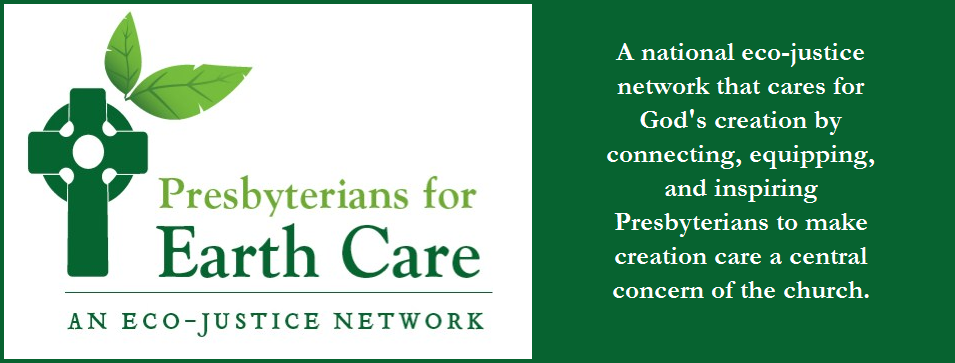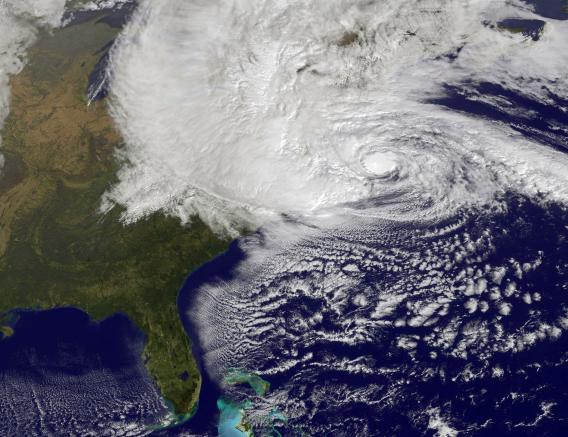Each week of Advent, we invite you to join us in reflecting in how caring for creation prepares us for the coming Christ. Over the next four weeks, we offer weekly reflections that tell the stories of four congregations and how they fulfilled particular requirements to be certified as an Earth Care Congregation by the Office of Environmental Ministries. If you are interested in joining their ranks, please contact Rebecca Barnes-Davies at Rebecca.Barnes-Davies@pcusa.org. May the work of these congregations bring you hope, even as we wait with expectation, joy, and love for the Hope of the world.
First Week of Advent
By: Holly Hallman
By: Holly Hallman
The earth is the Lord’s and all that is in it, the world, and those who live in it. Psalms 24:1
The long glorious days of summer gave way to the golds and reds of fall and now we have come to the slowing—the quieting—that gives those of us in the northern hemisphere a season of reflection and anticipation.
For the Montevallo Presbyterian Church of Montevallo, Alabama, there is much to reflect upon. Their church is a beautiful, white landmark in this college town. The sanctuary was built in 1902 and the education wing was completed in 1912. When it was time to update the facilities, the discernment process led them to an exploration of the “best practices” for turning “old” into “green.” With guidance and information they found through the PC(USA) Office of Environmental Ministry, they explored the guidelines for ENERGY STAR for Congregations. These guidelines have only been available for the last three or four years so it was new and exciting for this forward-thinking church to contemplate how they might incorporate as much of the program as possible into their renovation. Rev. Leanne Pearce Reed stated that it was easy, with this group, to sell the idea. The area where they live has pollution issues that affect air quality and the water in the nearby Cahava River.
The ENERGY STAR for Congregations program provides a range of possibilities that run from free to more costly. The new windows, insulation, and appliances that the members felt had to be purchased were on the costly side, for sure. However, if you ever get to talk to Rev. Leanne, she will tell you over and over that there are many, many low cost and NO cost ways to be more energy efficient. Her hope is that everyone will browse through the online guidelines, especially the “Sure Energy Savers” page.

But, all great journeys have stories with multiple parts; there’s not just mangers and shepherds. Congregant Bill Peters began the task of tracking the energy use of the structures and systems that are integral to their buildings. Using Portfolio Manager he tracked the kilowatt hours of electricity, the gallons of water and the therms of natural gas used. Bill says that Portfolio Manager is a very technical program designed for use in large, commercial facilities. It became his calling to make the program work for the Montevallo Congregation’s specific purpose. He will gladly tell you that he is excited about the re-launch that is coming in the spring of 2013 when Portfolio Manager will provide a user friendly tracking model. Why is he excited? A group of Episcopalian churches in Chicago are using this tool for accountability, and not just for a particular congregation, but across the whole diocese! His hope is that with this apples-to-apples ability to compare, many Presbyterian Churches across the country will join together to share information and resources.
A great story, yes, but the journey this year led right to the White House. The congregation was honored in September, as one of 28 churches that have become Energy Stars! Rev. Leanne was personally invited to represent her members. There is no doubt that even in those hallowed halls she lost no time telling everyone who would listen that they can do it too.
A great story, yes, but the journey this year led right to the White House. The congregation was honored in September, as one of 28 churches that have become Energy Stars! Rev. Leanne was personally invited to represent her members. There is no doubt that even in those hallowed halls she lost no time telling everyone who would listen that they can do it too.
Creator God, you brought the earth out of the void and flung stars into the skies above it. When you wanted the Wisemen to find the baby, born and laid in a manger, you led them there by a star that shone both day and night. We thank you for this Alabama congregation that has found a new and different star to bless their journey. Amen.
Holly Hallman recently retired from serving as a hospice chaplain, and she currently serves PEC on the Steering Committee.
Download all four PEC Advent Devotionals here!






